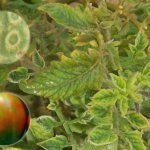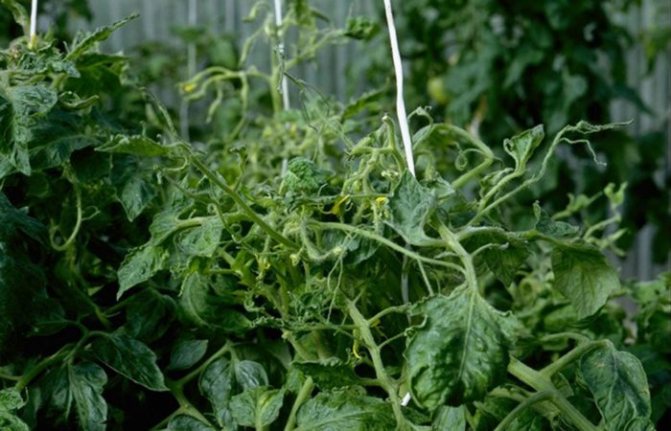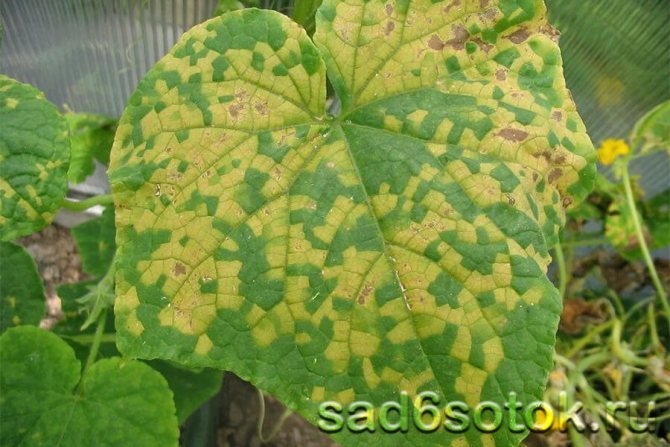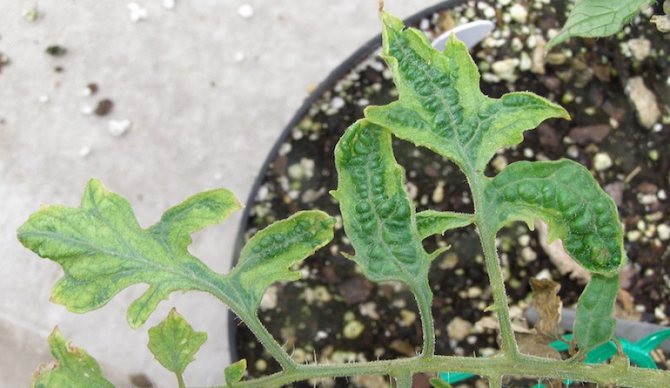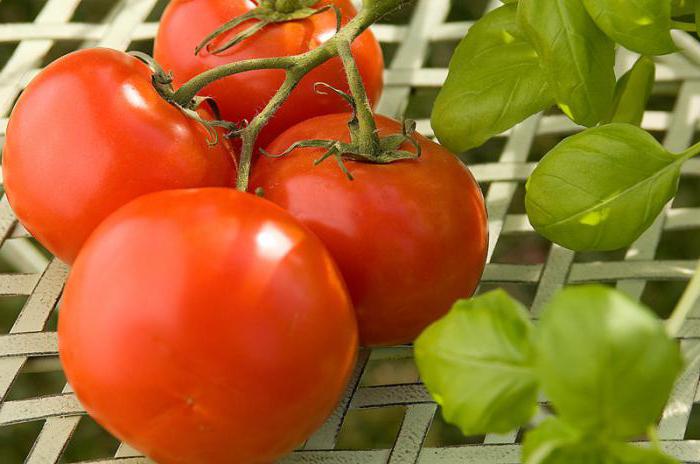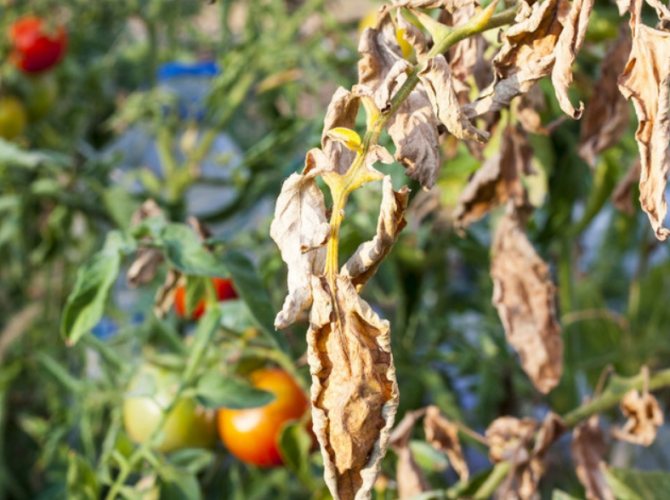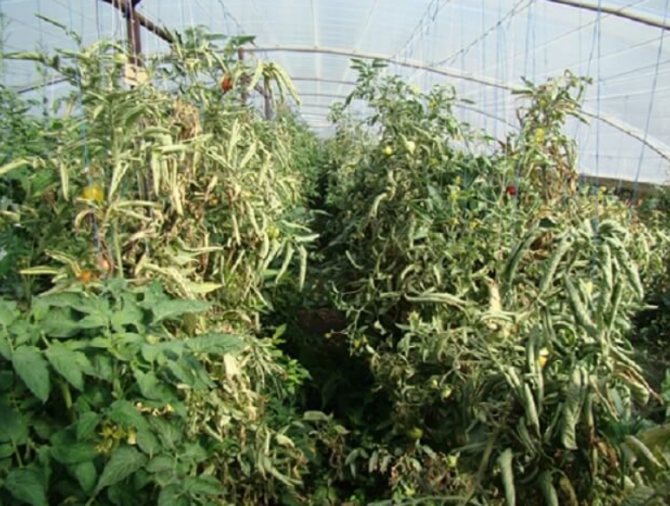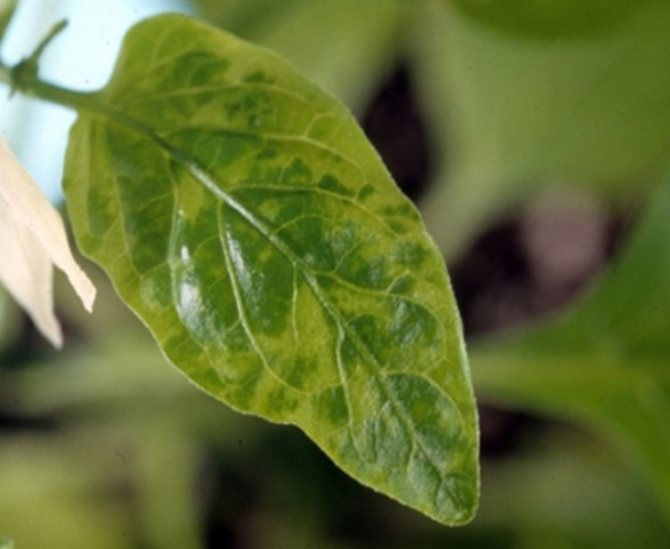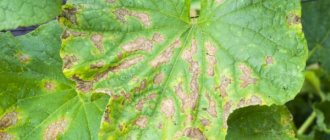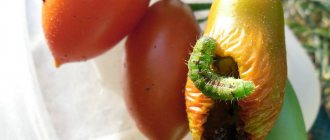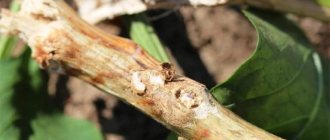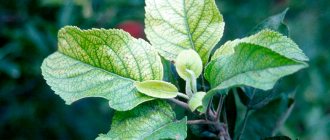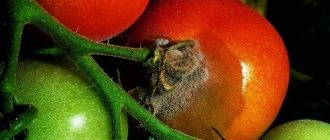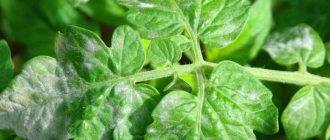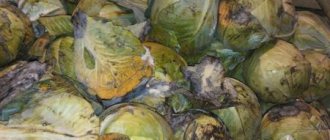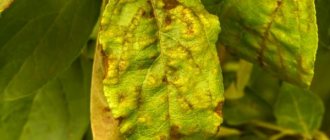Home / Pests and diseases
Back to
Published: 16.05.2019
Reading time: 8 min
0
413
5 / 5 ( 1 voice)
5 / 5 ( 1 voice)
Viral diseases of vegetables lead to serious crop losses. Among such infections is the tomato mosaic of tobacco, which is considered one of the most infectious and dangerous. Its treatment is ineffective, therefore, the main activities are related to prevention, disease prevention and compliance with agricultural practices.
- 1 Description and features of the disease
- 2 Ways of spread of infection
- 3 Signs of illness
- 4 Causes of TMV on tomatoes
- 5 Prevention: basic measures
- 6 Treatment
What is this disease?
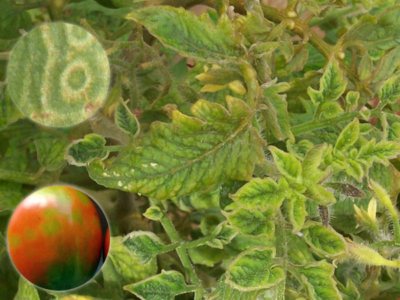
Tomato mosaic is a viral disease. It is very resistant to external influences. More than three hundred different plants can become sources and spread of the disease. These include:
- potatoes;
- beet;
- eggplant;
- pepper;
- spinach;
- tomatoes, etc.
In most cases, the mosaic affects varieties grown from seedlings. This is due to the fact that they are exposed to a large number of agrotechnical measures, which contributes to the spread of the disease.
Mosaic pathogens in tomatoes are caused by a virus called Tobacco mosaic tobamovirus. Infected seeds and even soil can become the source of this pathogen.
The disease can spread by contact with the sap of an infected plant on a healthy bush and transmission of the infection by insects, such as:
- cicadas;
- aphid;
- thrips.
Protective measures against tomato mosaic virus
For disinfection of seeds, heating or treatment with trisodium phosphate is carried out. Important elements are the removal of plant residues (they may be a source of infection), sterilization of the soil before starting a new crop rotation. If the tomato mosaic disease is weak, it is recommended to treat the plants with a 10% solution of whey, milk skim with the addition of microelements or 0.05% solution of the Pharmayod-3 preparation. It is very important to observe the optimal temperature regime, which in itself inhibits the development of the disease and does not allow the development of epiphytotics in the presence of a latent form of infection. The cultivation of resistant tomato hybrids is a reliable defense against the disease, until the accompanying viroses appear, which drastically reduce the resistance of plants.
Stable hybrids
F1 to tomato mosaicTomato mosaic tobamovirus (ToMV):
Semko-99, Semko-98, Partner Semko, Zhenaros, Kunero, Bella, Madison, Sors, Senzafin, Yvon, President, Anyuta.
Signs
Mosaic symptoms in tomatoes can vary. It depends on the degree of infestation, type of disease, growing conditions.
The main signs of mosaic disease in tomatoes are as follows:
- Withering. This process is observed in the first seven days after infection.
- Loss of elasticity. This symptom is observed when the intensive growth of the plant occurs during a period of significant solar radiation. After a cold snap, the plant recovers.
- Color change. It can range from pale or colorless to bright yellow and green. At the same time, well-defined areas of the affected tissues can be seen on the vegetables.
- Folding. Leaf blades grow unevenly.This process is more intense in the upper part of the plant.
Other common mosaic symptoms include leaf deformation. Often, their plates are reduced to such a size that the bush can become like a fern. Some of its sections resemble long threads.
Darkening appears inside the fruit. As a rule, it occurs near the calyx of the fetus in the form of gray-green areas. Subsequently, these areas grow, capturing the apex of the fruit. This is followed by tissue death. This process leads to the appearance of a brown mesh on the fruit. It is clearly visible through the skin of the tomatoes.
Treatment methods for different cultures
TMV can be distributed anywhere. If he has already got to the site, then it is almost impossible to completely destroy it. The most important thing is to prevent its spread in time. For this, preventive measures should be observed, which is especially important during the growing season of the plant.
Tobacco mosaic does not die even in winter, attacking the root system of some weeds. It can also affect cucumbers, appearing in various forms:


Ordinary mosaic, as a rule, affects cucumbers outdoors. At the first stage, the virus infects the tissues and leaves of the plant, which subsequently acquire a yellow-green color in the form of a mosaic. At the same time, plant growth slows down noticeably, flowering becomes weak. On the vegetable itself, dark areas are formed, it acquires a convex pimpled shape. The main carrier of the infection is aphids. Already ten days after infection, the first signs of the disease begin to appear.- Green mottle infects cucumbers planted in greenhouses. Even young leaves are already covered with wrinkles and spots, the alternation of light and very bright areas is noticeable. The growth and development of such plants is very slow, the petals on the corolla also become spotty, and the ovaries of the fruits fall off before they even have time to ripen.
- White mosaic can infect leaves at + 25 ° C, forming yellowish-white star-shaped blotches between the veins. The most important task is to prevent the virus from spreading further, otherwise it will be impossible to rid the plants of it later.
The treatment procedure consists in the timely removal of infected plants from the site and the introduction of increased doses of fertilizers. Before planting seeds, it is recommended to check their varieties and hybrids for TMV resistance. It is also necessary to remove weeds (alfalfa and thistle) in time after planting, as well as fight aphids.
Diseases of indoor plants: types and treatment of indoor flowers
It is extremely difficult to treat this disease, therefore, it is necessary to take all the necessary measures to prevent its occurrence. For this purpose, it is necessary to sow seeds that are less than two years old, and also to spray the seedlings with milk whey with the addition of a few drops of iodine.
It is very useful to warm up the seeds at a temperature of +60 ° C for three days. You can also keep them near the battery for several days. Often, TMV lives well in tobacco, and therefore it is necessary to keep the seeds of other plants as far away from it as possible, not allowing them to come into contact.
When pepper becomes infected with this disease, its affected leaves take on a variegated color: yellow, light green and black colors alternate between veins. Shortly thereafter, such leaves are deformed and fall off rather quickly.
Tobacco mosaic interferes with the growth of plants, and their fruits become blotchy, ugly and small in size. In addition, the virus attacks the rhizomes of the pepper.
The reasons
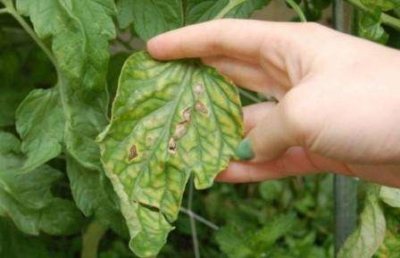

The main sources of the mosaic virus in tomatoes are:
- infected seeds;
- soil with pathogen spores;
- the remains of diseased plants.
The spread of infection occurs in this way:
- When caring for plants. The pathogen can be transmitted through the gardener's tools or clothing.
- Through mechanical damage. Violation of the outer protective shell of the plant leads to the fact that the virus can get inside.
- With the help of insect pests. They are present in large numbers in vegetable gardens, spreading the infection quite quickly.
- Due to violations of the rules for conducting agrotechnical measures.
Insufficient lighting of tomatoes is a favorable environment for the spread of infection. The pathogen is viable in the garden for 22 months.
Tomato mosaic virus biology
The virus is highly resistant to the environment. The thermal inactivation point is 95 ° C, resistant to drying, therefore it can be stored in inventory, in cigarettes, and even in pipe tobacco. Infection occurs through damaged hairs and other cells of the epidermis.
The widespread introduction into production of hybrids in which there is a gene for resistance to the tomato mosaic virus makes it possible to curb the prevalence and harmfulness of this pathogen on tomatoes, but new abnormal strains and new highly specialized viruses appear.
Cucumber mosaic virus (CMV) and potato X-virus (PXV) occupy the most active free niche, which in mixed infections often destabilize the resistance determined by the gene to ToMV, which leads to the development of complex streak.
Tomato resistance to ToMV is determined by three genes -Tm-1
(tolerance gene obtained from
Lycopersicon hirsutum
and localized on chromosome 5), as well as allelic genes
Tm-2
and
Tm-22
determining the hypersensitivity reaction to the virus (isolated from chromosome 9
L. peruvianum
). In practice, the most commonly used gene
Tm-22
... In a homozygous state, immune hybrids can be obtained. However, in Holland and Denmark, cases of overcoming their immunity are already known.
Most resistant hybrids are heterozygous for this gene. Such plants may show symptoms of systemic necrosis, yellow mosaic in the upper third of the plant, and fruit streaks. Such symptoms can appear only when a number of conditions are combined: a temperature above 28 ° C for several days, a large infectious load and high insolation.
Varieties, photo
Today, there are two main types of mosaic in tomatoes - tobacco and pepino. They are not significantly different from each other.
Tobacco
This disease accounts for up to 20% of tomato losses worldwide. The main signs of the disease:
- fruit spotting;
- the appearance of yellow spots on the leaves;
- tissue necrosis (death);
- deformation of various parts of plants.
It is not uncommon for tomatoes to be exposed to other infections during infection with tobacco mosaic. As a result, they begin to lag behind in development. The fruits lose their presentation and decrease in volume.
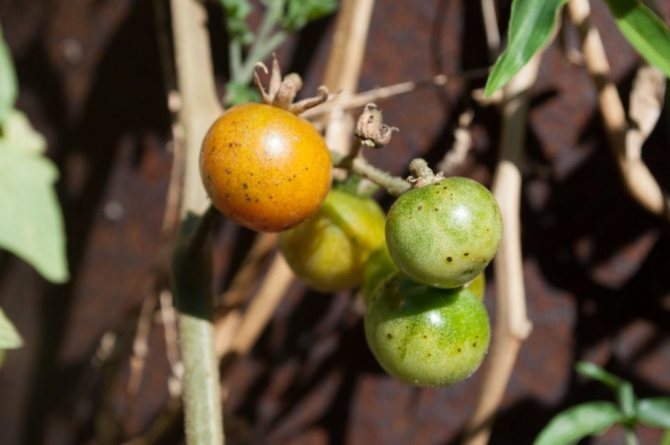

Pepino
This type of mosaic is the most dangerous. It causes marbling of fruits and some other pathological changes such as
- chlorosis;
- nettle tops;
- yellow leaf spot;
- mosaic leaves;
- the appearance of brown cups.
Pepino mosaic causes uneven ripening of fruits, their cracking, blistering leaves. Look at a photo of tomatoes with signs of the disease:
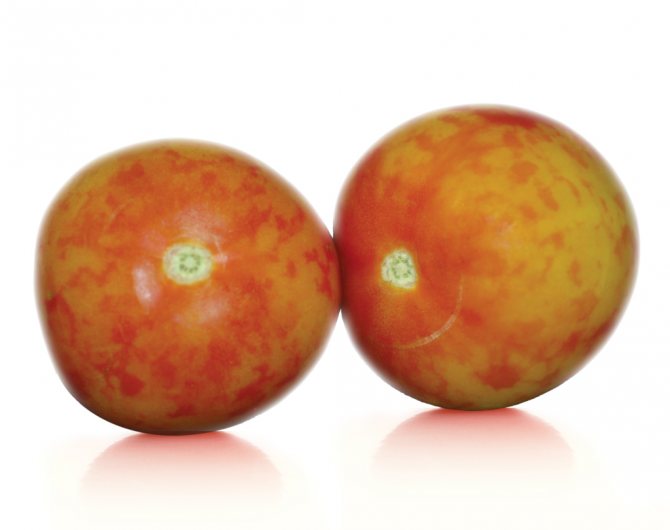

Brief historical background
For the first time this disease was recorded at the end of the 19th century in the process of growing tobacco. Bright marks appeared on the infected bush. Over time, he began to lose shape and eventually died. After that, the disease gradually spread to neighboring plants and after a short time, entire plantations became unsuitable for further cultivation.
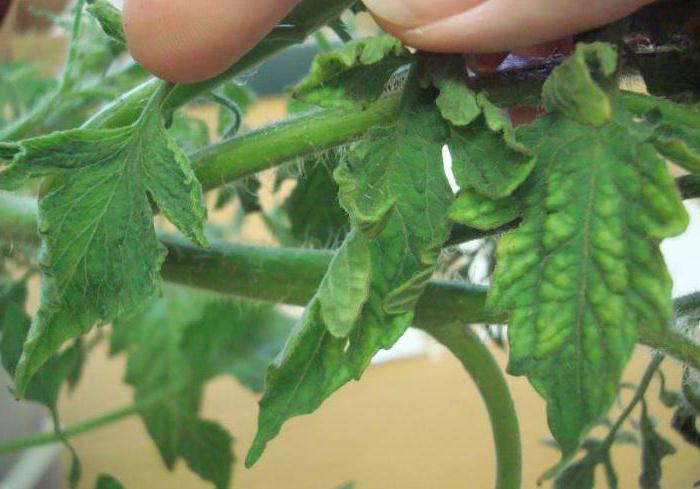

The only method of control available at that time was considered to be the complete destruction of infected seedlings. Such measures made it possible to save the rest of the plants. Many years after the discovery of this disease, Dr. Ivanovsky was able to identify its cause. It turned out to be the tobacco mosaic virus.
How does a viral disease develop and how is it dangerous?
Mosaic can spread both in greenhouses and in open areas. You can see the first signs of the disease in mid-June. During this period of time, the growth of the bushes partially or completely stops.
The process of development of the disease is as follows:
- Initially, the tops of the bushes become thinner and curl.
- The color of the leaves changes from green to yellow-green.
- Gradually, the leaves begin to resemble lace. Spots or necrotic areas may appear on the petioles and stems.
- The fruits begin to ripen unevenly and crumble.
- Some tomatoes growing closer to the ground have brown or yellow patches.
- Browning often extends to the inside of the tomatoes, which becomes mesh-like.
The danger of mosaics is due to the fact that this disease can spread easily. The disease leads to a significant decrease in the volume of the harvested crop. Those fruits that still manage to be preserved do not have a presentation. They can be small. On their surface, as a rule, yellow or brown spots are clearly expressed.
How to fight?
Plants that have been infected with mosaics cannot be saved. Currently, there are no funds that would completely get rid of this disease. The gardener's task is to strengthen the protective functions of tomatoes.
To combat mosaics, chemical and biological agents are used, such as:
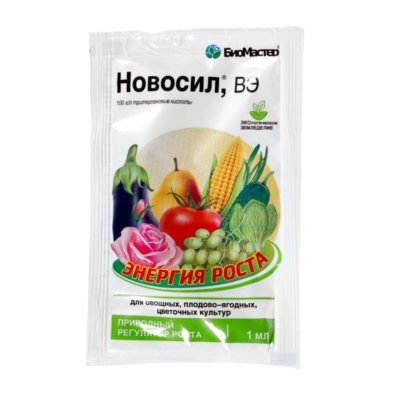

Novosil. This remedy is a natural immunostimulant. Its main functions are to stimulate seed germination and strengthen the root system. In addition, the drug destroys some viral diseases. In Novosil, it is necessary to soak the seeds. For this, only 3 drops of the drug per 3 liters of water are enough. The seeds are kept in solution from evening to morning, then the water is drained.
When spraying plants during their intensive growth, you will need 5-15 drops of the product per 3 liters of water. You need to spray once every 2-3 days for a week.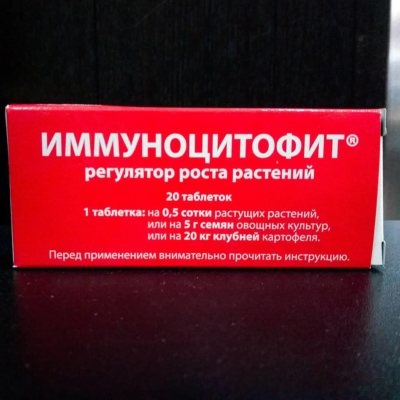

Immunocytophyte. This remedy increases resistance to disease. In addition, it stimulates the growth of tomatoes. When processing seeds, you need to prepare a solution using 1 tablet per 1 tablespoon of water. This volume is enough to soak 5 grams of seeds.
To process plants, you need to soak the tablet in 1 tablespoon of water, then add the resulting solution to 2 liters of water. Plants are treated with the solution during the period of active growth from 1 to 5 weeks after planting.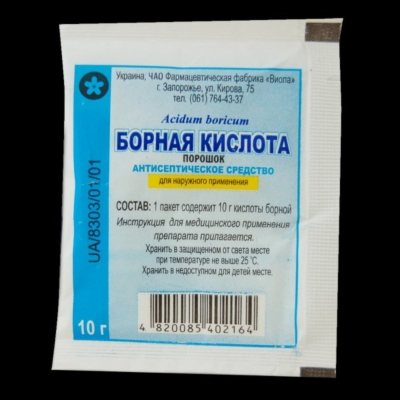

Boric acid. For seed treatment, you need to use 0.5 grams of this product per 1 liter of water. For spraying plants, use 1 gram of the product per 1 liter of water. Spraying is carried out no more than twice a week (in the evening).
- Novosil's packaging costs about 1,500 rubles.
- Immunocytophyte can be purchased for 68 rubles.
- Boric acid has a low price - only 8 rubles per package.
Prevention measures
The main methods of preventing mosaic in tomatoes:
- After the first signs of the disease appear, the infected plants must be destroyed.
- It is forbidden to collect seeds of diseased tomatoes.
- It is imperative to observe the crop rotation.
- When carrying out agrotechnical measures, you need to treat the tool with alcohol or potassium permanganate.
- After the end of the harvest season, the walls of the greenhouse must be disinfected.
- Every year in the greenhouse it is necessary to change the top layer of soil 10-15 centimeters thick.
- It is forbidden to smoke in the greenhouse.
- The plant should receive a balanced diet.
- Weeds and pests should be constantly dealt with.
The above preventive measures do not allow you to completely get rid of the disease, but significantly reduce the possibility of its appearance and spread.
Spheres of defeat
It should be remembered that the tobacco mosaic virus infects healthy plants by entering them through the juice of infected crops. This can happen when:
- sowing seeds infected with this virus;
- the presence of various sucking pests in the soil: nematodes, ticks, which transmit the virus along with their infected saliva to other plants;
- diving, pinching, pinching and transplanting crops (wounds of roots and shoots are infected);
- the sap of plants getting into the equipment with which they are processed, damaging the hairs and causing wounds to the surfaces of the stems and leaves.
How to deal with scab on an apple tree in autumn and spring
As you can see, there are many ways to get infected with this insidious virus.
Are there any tomato varieties that are resistant to this virus?
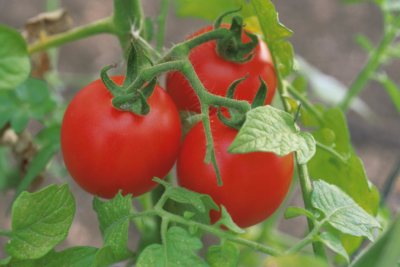

Full or partial resistance to mosaic is shown by such varieties of tomatoes as:
- Charisma F1;
- Vologda F1;
- Ural F1;
- Alaska F1;
- Firebird F1.
There are also other varieties that are less susceptible to disease.
Mosaic in tomatoes is a very common disease that can significantly reduce the volume of the yield obtained, while impairing the appearance of the fruit. That is why it is very important not only to prevent infection, but also to respond in time to the first manifestations of the disease.

